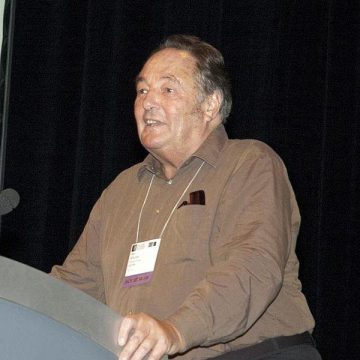CV
University of Vienna
Ph.D. (chemistry and physics with honors), University of Vienna, 1967. Postdoctoral Fellow, MaxPlanck-Institute for Biophysical Chemistry, Göttingen, 1968-1970. ‘Habilitation’ in Theoretical Chemistry, 1971.
Full Professor of Theoretical Chemistry, University of Vienna, 1973-; Head of the Institute of Theoretical Chemistry, 1973-1991 and 1996-2010. Head of the Computer Center of the University of Vienna, 1985-1991.
External Faculty Member of the Santa Fe Institute, Santa Fe (NM), 1991-2003 and 2004-. Founding Director of the Institute of Molecular Biotechnology, Jena (Germany), 1991-1995. External Member of the Faculty for Biology and Pharmacy at the Friedrich-SchillerUniversity,
Jena (Germany), 1995-.
Memberships: Austrian Academy of Sciences (Fellow 1984, Vice President 2000-2003, President 2006-2009, Academy Council, 2011-), Deutsche Akademie der Naturforscher Leopoldina (Fellow 1993, Member of the Presidium 2001-2006), Sächsische Akademie der Wissenschaften (Fellow 1994), Berlin-Brandenburgische Akademie der Wissenschaften (Fellow 1995), Nordrhein-Westfälische Akademie der Wissenschaften (Fellow 1999), National Academy of Sciences, USA (Foreign Associate 2009), Academia Europaea London (Fellow 2009), EMBO (Member 2014).
Recipient: Erwin Schrödinger Award 1983, Österreichisches Ehrenzeichen für Wissenschaft und Kunst 1993, Phillip Morris Research Award 1995, Josef Loschmidt Medal 1995, Science Award of the City of Vienna, 1997, Kardinal Innitzer Award, 1997, Wilhelm Exner Medal 1999, Gr.Silbernes Ehrenzeichen für Verdienste um die Stadt Wien, 2009.
Peter Schuster’s early work deals with the theory and structural properties of intermolecular complexes. He presented computational evidence for different geometries of normal, strong, and solid state hydrogen bonds. Merging chemical reaction kinetics with molecular biological evolution led to the development, together with Manfred Eigen, of concepts such as molecular quasispecies and catalytic hypercycles. Schuster’s contribution to this work consists of a rigorous mathematical analysis employing dynamical systems theory. Inspired by the evolution of RNA molecules in vitro, Schuster conceived a new theory of phenotype evolution that takes place simultaneously in genotype (sequence) space and phenotype (function) space. He related the two by a mapping that can be analyzed rigorously for RNA secondary structures and provided the first computationally accessible example of a biopolymer landscape over sequence space. The two most important predictions of the RNA landscape work are first, the existence of neutral networks in sequence space, and second, the intersection theorem stating that for
any two structures it is possible to find at least one sequence capable of folding into both. Both predictions have been verified experimentally by experiments involving the in vitro evolution of functional RNAs. Schuster also developed important tools for RNA structure
prediction: (i) inverse folding to calculate sequences that form predefined structures, (ii) computation of all suboptimal conformations within an energy band, and (iii) kinetic folding. Most recently, Schuster has applied his expertise in dynamical systems theory to
neural pulse propagations and genetic regulation.
